Bandit LOAF
Long Live the Confederation!
Origin Systems was closely tied to tabletop gaming from the day Richard Garriott founded the company with some of his fellow roleplaying companions; the company even had a partnership with Steve Jackson Games, another Austin legend, in the 1980s which produced adaptations like Autoduel (1985) and Ogre (1986). In a world before dedicated game development jobs like 3D artist had developed, the crossover in jobs between the two industries was significant. Many of the luminaries responsible for the Wing Commander universe, including Warren Spector and David Ladyman, arrived at Origin with bibliographies that included companies like TSR and FASA. Similarly, most of the programmers and designers were pen-and-paper gaming enthusiasts. Chris Roberts famously connected to the company after meeting Denis Loubet at Austin's Dragon's Lair.
Between that shared work and that shared admiration, role playing games and their intricate supplements often served as inspiration for Wing Commander's makers, especially the first two games. RPGs and wargames were ascendant in the late 1980s, developing endless amounts of material to help game masters create fictional worlds… exactly what Origin was trying to do in the electronic realm! Today we've researched four different books that heavily influenced very specific elements of the Wing Commander series and we're going to introduce you to them below.

Renegade Legion Interceptor
System: Renegade Legion
Year: 1987
ISBN: 1555600530
BGG: LINK
Status: Not in Print
Renegade Legion Interceptor was the first board game published in FASA's Renegade Legion world. It is a game of starfighter combat that outlines incredibly detailed and granular systems for things like how the individual systems of a space fighter work and how they suffer and inflict damage. Much of this was studied closely for Wing Commander, as was the game's setting: a distant future war between an oppressive human empire and an alliance of aliens (if this doesn't sound exactly like Wing Commander, check out the original pitch). Finally, the Terran Overlord Government's Roman-influenced milieu seems to be something that continues to influence Chris Roberts on Star Citizen today and there's little question that it was the source of several of Wing Commander's missile and ship names! FASA would later launch a video game adaptation after Wing Commander's success… but it remains only a cult classic at best. (Another coincidence: Wing Commander editor David Ladyman worked in that same capacity on Renegade Legion Interceptor.)




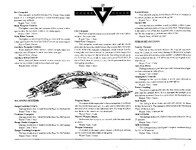


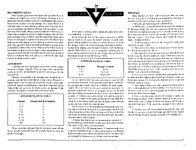
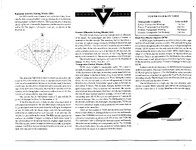

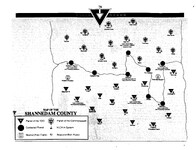




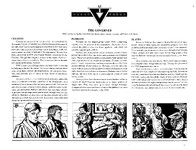

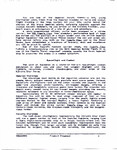

Azhanti High Lightning
System: Traveller
Year: 1980
BGG: LINK
Status: Available Digitally
What would you do if you had the biggest gun in the universe? Azhanti High Lightning may help you answer that question. It's a Game Designers Workshop board game set aboard a capital ship in the Traveller universe and was supposedly a favorite of the Wing Commander II team. The game pits players against each other to capture the ship (whether as mutineers or boarders or several other scenarios). And the ship was the reference for none other than the TCS Concordia's phase transit cannon! Wing Commander II director Siobahn Beeman has explained:






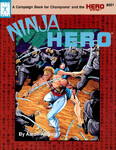
Ninja Hero
System: HERO (4th Edition)
Year: 1990
ISBN: 1558060952
RPGG: LINK
Status: Available Digitally
I was working on an article about Shotglass' name (look forward to that!) when I noticed something interesting in the surviving Wing Commander I dev materials: Bossman was still missing a first name when the character bios were written. In its place was a note to choose a Chinese name from Ninja Hero. What was Ninja Hero, some kind of action movie? It turns out Ninja Hero was a sourcebook of martial arts-inspired reference material for the HERO roleplaying system. This is the sort of reference book published endlessly in the late 1980s and early 1990s, trying to create as detailed possibilities as possible for various roleplaying systems. Even more interesting, Ninja Hero was authored by none other than Origin's Aaron Allston, who may have been the person now referencing it!
And reference it was: after thumbing through the book it was immediately obvious what the note meant: there was an entire section that was simply listing Asian names and surnames for players to put together to create characters! Bossman wasn't home, though: Kien is not included in the selection of Chinese names… but it's immediately obvious that this is also how Spirit became Tanaka Mariko (and likely why Wing Commander I's lore had such care for presenting the names in the correct order). It's also extremely funny that they had trouble settling on a final first name for Bossman given what happens to his lore in the movie… but that is also an article for another day!



Aysle: The Sourcebook of Magical Reality
System: TORG
Year: 1990
ISBN: 0874313066
RPGG: LINK
Status: Available Digitally
Torg, no relation to the professor, is a roleplaying game based around the potential of crossing over different themed realities. Different supplements would detail how these realities worked: for instance one might be a high tech science fiction utopia and another a medieval fantasy Earth.
In spite of the vast possibilities implied there, the connection to Wing Commander is incredibly specific: it's the source of the name of Admiral Tolwyn! The Admiral's family name comes not from British history but from Torg's Aysle sourcebook which details its imagined fantasy world (orcs and goblins and such). And perhaps the most notable fictional character it brings to life is "Tolwyn of House Tancred", a noblewoman who has a Jesus-like death and resurrection followed by a role in the epic battle for… whatever all this is. The book would've been published in 1990 just as the Wing Commander II team was developing the character (Tolwyn would first appear mentioned with Secret Missions 2 but he was created for Wing Commander II).



And Beyond…
I quoted above a Twitter reply from Siobhan Beeman that was part of an absolutely invaluable thread about the inspirations behind the original Wing Commanders. I'm going to reproduce the whole thing here for posterity and to give everyone some other routes to follow to learn more about how the people that made the games were thinking:
--
Original update published on December 15, 2024
Between that shared work and that shared admiration, role playing games and their intricate supplements often served as inspiration for Wing Commander's makers, especially the first two games. RPGs and wargames were ascendant in the late 1980s, developing endless amounts of material to help game masters create fictional worlds… exactly what Origin was trying to do in the electronic realm! Today we've researched four different books that heavily influenced very specific elements of the Wing Commander series and we're going to introduce you to them below.

Renegade Legion Interceptor
System: Renegade Legion
Year: 1987
ISBN: 1555600530
BGG: LINK
Status: Not in Print
Renegade Legion Interceptor was the first board game published in FASA's Renegade Legion world. It is a game of starfighter combat that outlines incredibly detailed and granular systems for things like how the individual systems of a space fighter work and how they suffer and inflict damage. Much of this was studied closely for Wing Commander, as was the game's setting: a distant future war between an oppressive human empire and an alliance of aliens (if this doesn't sound exactly like Wing Commander, check out the original pitch). Finally, the Terran Overlord Government's Roman-influenced milieu seems to be something that continues to influence Chris Roberts on Star Citizen today and there's little question that it was the source of several of Wing Commander's missile and ship names! FASA would later launch a video game adaptation after Wing Commander's success… but it remains only a cult classic at best. (Another coincidence: Wing Commander editor David Ladyman worked in that same capacity on Renegade Legion Interceptor.)


Two of the game's signature fighters featuring familiar names.








Renegade Legion Interceptor's complex damage system inspired the one designed for the original Wing Commander.


The Renegade Legion Interceptor map compared to the Vega Sector map included with Claw Marks.






Compare the world of Renegade Legion Interceptor to the one suggested in the original 'Squadron' proposal.

Azhanti High Lightning
System: Traveller
Year: 1980
BGG: LINK
Status: Available Digitally
What would you do if you had the biggest gun in the universe? Azhanti High Lightning may help you answer that question. It's a Game Designers Workshop board game set aboard a capital ship in the Traveller universe and was supposedly a favorite of the Wing Commander II team. The game pits players against each other to capture the ship (whether as mutineers or boarders or several other scenarios). And the ship was the reference for none other than the TCS Concordia's phase transit cannon! Wing Commander II director Siobahn Beeman has explained:
The other inspiration for WC2's capital ships were the capital ships from Traveller, especially the Azhanti High Lightning. The concept of a "spinal mount" weapon (like the Concordia's phase transit cannon) is a direct lift from Traveller's ship construction rules.







Ninja Hero
System: HERO (4th Edition)
Year: 1990
ISBN: 1558060952
RPGG: LINK
Status: Available Digitally
I was working on an article about Shotglass' name (look forward to that!) when I noticed something interesting in the surviving Wing Commander I dev materials: Bossman was still missing a first name when the character bios were written. In its place was a note to choose a Chinese name from Ninja Hero. What was Ninja Hero, some kind of action movie? It turns out Ninja Hero was a sourcebook of martial arts-inspired reference material for the HERO roleplaying system. This is the sort of reference book published endlessly in the late 1980s and early 1990s, trying to create as detailed possibilities as possible for various roleplaying systems. Even more interesting, Ninja Hero was authored by none other than Origin's Aaron Allston, who may have been the person now referencing it!
And reference it was: after thumbing through the book it was immediately obvious what the note meant: there was an entire section that was simply listing Asian names and surnames for players to put together to create characters! Bossman wasn't home, though: Kien is not included in the selection of Chinese names… but it's immediately obvious that this is also how Spirit became Tanaka Mariko (and likely why Wing Commander I's lore had such care for presenting the names in the correct order). It's also extremely funny that they had trouble settling on a final first name for Bossman given what happens to his lore in the movie… but that is also an article for another day!



Aysle: The Sourcebook of Magical Reality
System: TORG
Year: 1990
ISBN: 0874313066
RPGG: LINK
Status: Available Digitally
Torg, no relation to the professor, is a roleplaying game based around the potential of crossing over different themed realities. Different supplements would detail how these realities worked: for instance one might be a high tech science fiction utopia and another a medieval fantasy Earth.
In spite of the vast possibilities implied there, the connection to Wing Commander is incredibly specific: it's the source of the name of Admiral Tolwyn! The Admiral's family name comes not from British history but from Torg's Aysle sourcebook which details its imagined fantasy world (orcs and goblins and such). And perhaps the most notable fictional character it brings to life is "Tolwyn of House Tancred", a noblewoman who has a Jesus-like death and resurrection followed by a role in the epic battle for… whatever all this is. The book would've been published in 1990 just as the Wing Commander II team was developing the character (Tolwyn would first appear mentioned with Secret Missions 2 but he was created for Wing Commander II).



And Beyond…
I quoted above a Twitter reply from Siobhan Beeman that was part of an absolutely invaluable thread about the inspirations behind the original Wing Commanders. I'm going to reproduce the whole thing here for posterity and to give everyone some other routes to follow to learn more about how the people that made the games were thinking:
Hah! No... or rather, sort of! The Confed starbases in WC2 were inspired by two things: the Cylon basestars from the original BSG, and Starfleet Headquarters from the old "Starfleet Technical Manual" from Franz Joseph Designs.
LINK
The latter were the inspiration for the design of starbases in the Starfleet Battles board game from Task Force Games. I played a *lot* of SFB, which was essentially WW2 naval combat in space, and the game was a major inspiration for how capital ships in general worked in WC2.
The other inspiration for WC2's capital ships were the capital ships from Traveller, especially the Azhanti High Lightning. The concept of a "spinal mount" weapon (like the Concordia's phase transit cannon) is a direct lift from Traveller's ship construction rules.
But all that having been said, Stanford torus space stations were themselves an inspiration for Franz Joseph's Starfleet HQ, so that DNA is definitely in WC2.
Broadly speaking, you can trace everything in the early Wing Commander games back to a handful of sources:
* Star Wars (duh!)
* TOS, TMP and WoK Trek
* The Starfleet Technical Manual, which is kind of parallel evolution off the TOS root stock
/1
* WW2 dogfighter gun camera footage
* Traveller
* Larry Niven's Known Space books
* Top Gun
* The Cambridge Encyclopedia of Astronomy
2/2
--
Original update published on December 15, 2024
